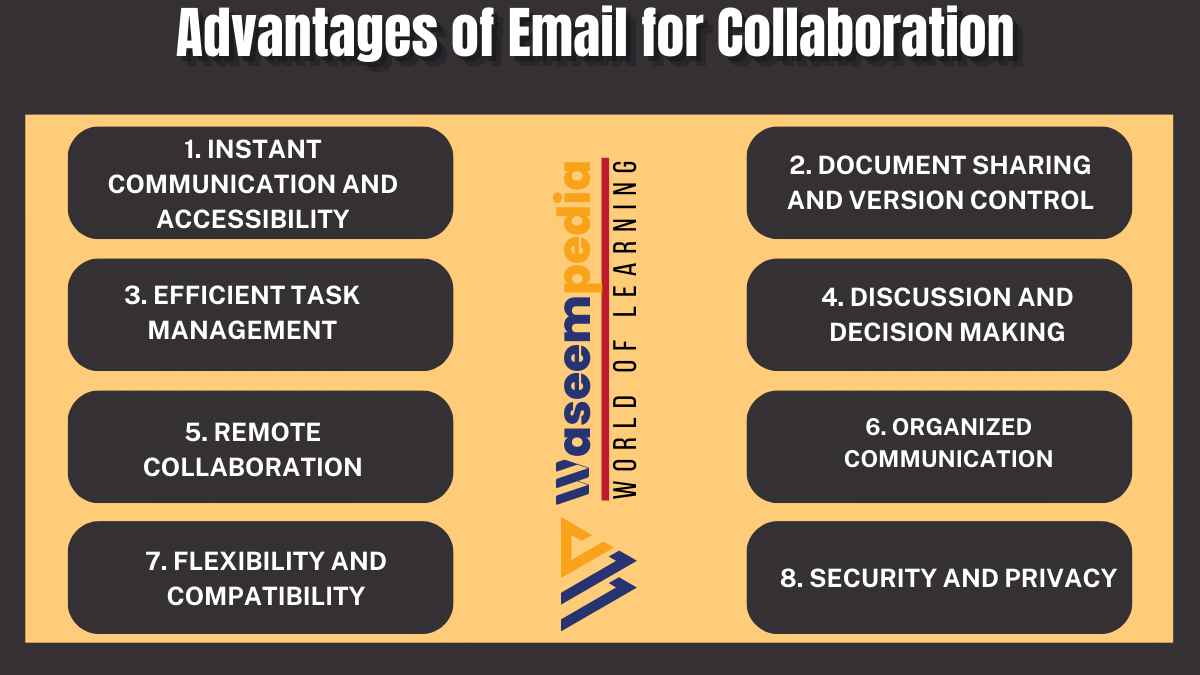In today’s fast-moving business world, working together as a team is super important for success. Even though we have lots of fancy collaboration tools, email is still really valuable for teamwork and getting things done.
Email helps us talk to each other instantly, share important documents, and keep track of tasks we need to do. It’s flexible and easy to use, making it a must-have tool for modern businesses. By using email effectively, teams can work better together, be more productive, and achieve success.
Remember, even with all the cool new tools out there, email is still a crucial way to communicate and work together as a team. So let’s make the most of it and achieve great things together.

In this article, we will explore the advantages of Email for Collaboration and how it can enhance teamwork and productivity.
10 Advantages of Email for Collaboration
10 Advantages of Email for Collaboration are given below:
1. Instant Communication and Easy Access
Email offers instant communication capabilities, allowing team members to quickly send and receive messages. This means efficient exchanges of information, ensuring everyone stays in the loop. Email is also easily accessible from various devices, like computers, smartphones, and tablets, enabling team members to stay connected no matter where they are.
2. Sharing and Controlling Documents
Email makes it simple to share documents among team members. You can attach files to emails, allowing for easy exchange of important documents, presentations, and spreadsheets. Moreover, with email, you can maintain version control, ensuring everyone works with the latest information, and avoiding confusion caused by multiple document versions.
3. Effective Task Management
Email serves as a valuable tool for task management and coordination within a team. You can assign tasks, set deadlines, and share progress updates through email. This way, teams have a centralized location for tracking responsibilities, making sure everyone is on the same page and accountable for their assigned tasks.
4. Discussions and Decision Making
Email facilitates discussions and decision-making processes within a team. Important topics or complex decisions can be addressed through email threads, allowing team members to share their thoughts, provide input, and reach a consensus. These email discussions also provide a written record of the conversation for future reference.
5. Collaboration for Remote Teams
Email is particularly advantageous for remote collaboration. As remote work becomes more common, teams may be spread across different locations and time zones. Email allows team members to collaborate at their own pace, contributing to the team’s progress regardless of their schedules. Remote team members can share updates, provide feedback, and engage in discussions conveniently, promoting collaboration across distances.
6. Organized Communication
Email provides structured and organized communication. Conversations can be grouped into email threads, making it easy to follow discussions and find specific information. Team members can search their email archives for important messages or attachments, ensuring that crucial information is readily accessible.
7. Flexibility and Compatibility
Email offers flexibility and compatibility across different platforms and systems. No matter which email service provider or client is used, team members can send and receive emails seamlessly. This allows collaboration among individuals using different email platforms or even different organizations, fostering teamwork across different groups.
8. Security and Privacy
Email platforms often come with robust security features to protect sensitive information. Encryption and authentication mechanisms ensure that email communications remain secure and confidential. Additionally, email allows for individual control over who can access specific messages, attachments, or threads, enhancing privacy and safeguarding sensitive data.

